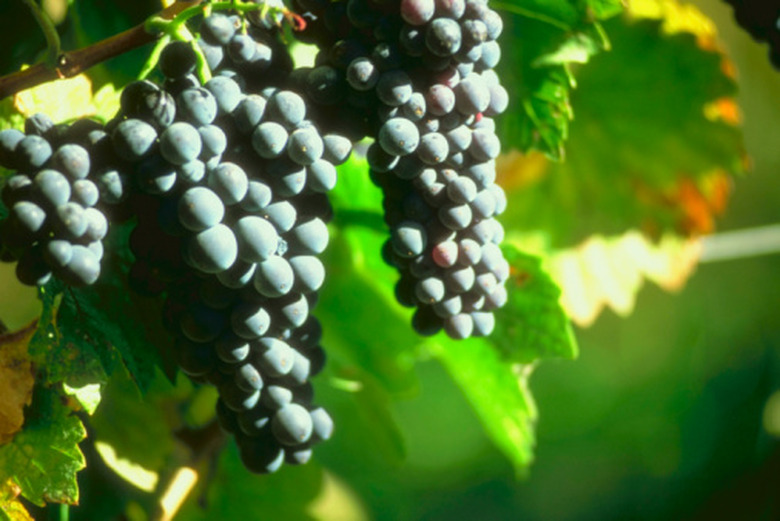When Is Muscadine Season?
The muscadine, Vitis rotunifolia, is a type of grape that is grown primarily in the southern states. It has a tough skin and contains a hard, inedible seed. They have a sweet, rich flavor and come in bronze and purple-black colors. The light-colored variety is sometimes called "scuppergongs."A crop that can tolerate the high humidity of the South, muscadine season brings rich rewards for growers.
About Muscadine Grapes
Muscadine grapes come in a number of varieties of both bronze and black types. Some types are self-fertilizing, while other varieties need a pollinator planted nearby in order to produce fruit. Some of the popular bronze varieties include Summit, Higgins and Carlos. Common purple types are Cowart, Regale and Supreme.
Planting Muscadine Grapes
For best results, muscadine grapes are planted in early spring after all danger of frost has passed, according to Florida Grape Growers Association writer Jiang Lu. These plants prefer a slightly acid soil of 6.0 with fertile, loamy soil. Plants are placed in six to eight-inch holes and watered generously to give them a good start. As shoots grow, growers must train the new vines onto trellises or wires to support the plants as the fruit forms. Vines are generally limited to two main lateral shoots and side suckers should be removed to concentrate nutrients to these two producing segments.
Cultivation of Muscadine Grapes
Muscadine grapes are pruned between November and February. Small spurs are kept on the vines every six inches. These spurs are pruned to bear only two or three buds. Fertilize plants with 4-1-2 or 3-1-2 mixtures of nitrogen, phosphorus and potassium fertilizer. Use one pound of fertilizer per year of age of the vine up to four pounds. Irrigate weekly. Muscadine grape roots run shallow, so keep plants weeded by hand or with a hoe. Mechanical methods of weeding may damage roots.
Muscadine Harvest Season
Muscadine grapes are harvested starting the third season of growth. The grapes mature from early August to September. Fruit is ready for harvest when it falls easily from the vine. Shaking the vines firmly will dislodge the mature fruits. Remove mature fruits every two to five days during the harvest season.
Problems of Muscadine
Though muscadine grapes have fewer pest problems than other bunch grapes, they can still suffer from anthracnose, downy mildew and black rot. Use a fungicide recommended by your local agricultural extension service for the best results for your area.
